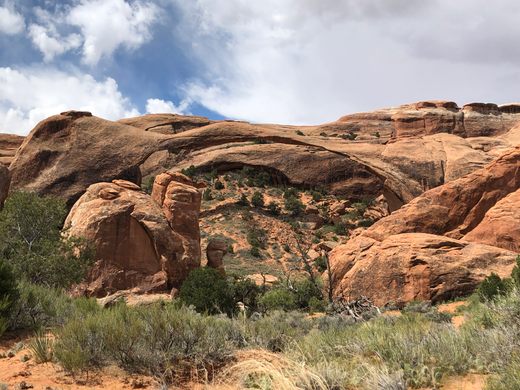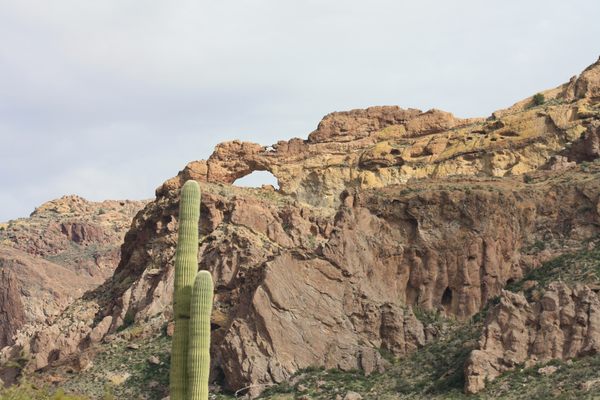Landscape Arch
The fifth-longest natural arch in the world, and the longest outside China.
Ranking the world’s natural arches by size isn’t a precise science, as the Natural Arch and Bridge Society (NABS) is quick to point out in its global rankings. Not only is the available data not always consistent, there’s also the problem of how to define “largest” or “longest” when it comes to arches.
NABS, however, has ranked the world’s longest natural rock arches by span, defined as the horizontal extent of unsupported rock in the arch. And in these rankings China is most definitely king, with all four of the world’s longest natural arches located within its territory. But then comes Landscape Arch in Arches National Park, Utah, recognized by NABS as the fifth-longest natural arch in the world, and the longest outside China.
Landscape Arch is located inside Arches National Park, a 76,679-acre park named for the 2,000 or so natural sandstone arches that dot its high-desert landscape. In 2004, a team used laser technology to measure Landscape Arch. They found that it had a span of 290.1 feet (plus or minus 0.8 feet), a height of 77.5 feet, a width of 18 feet, a thickness of 6 feet, and an opening breadth of 295 feet.
When they published their findings, the researchers believed that Kolob Arch in Zion National Park, Utah, was slightly longer, and therefore potentially the longest in the world. But when they measured Kolob in 2006, they found it had a span of 287.4 feet, just a little shorter than Landscape Arch.
Landscape Arch, therefore, was the largest natural stone arch in the United States. Its potential as a world-record setter, however, was scuppered by accurate measurements of a handful of arches in China. The longest of these was Fairy Bridge (Xian Ren Qiao), a natural bridge carved through limestone karst by the Buliu River in the Guangxi Province. At around 400 feet (across the span of its opening), the Fairy Bridge has, since 2010, been considered the longest natural arch in the world.
Landscape Arch and Fairy Bridge, however, are very different arches. The latter—an example of a meander natural bridge—is a gargantuan arch with a mighty girth. Landscape Arch—an arc natural arch—is a spindly thing in comparison. And while Fairy Bridge looks like it could survive for many more centuries, Landscape Arch, like other arc natural arches, is presumed to be very old and near the end of its lifecycle.
In 1991, a 73-foot slab of rock fell from underneath the thinnest section of Landscape Arch. Then, in June 1995, two more rocks fell from the arch, one measuring 47 feet and the second 30 feet. The Park Service was forced to close the trail that ran beneath the arch. But for now, at least, Landscape Arch is still standing, its sandstone span creating a natural bridge in the blue skies above Arches National Park.
Know Before You Go
BE ADVISED: From April 1 through October 31, 2023, daytime visitors to Arches National Park are required to have a timed entry ticket to enter the park. Reservations open three months in advance.
Arches National Park is located five miles north of the town of Moab, Utah. Landscape Arch is located in the north of the park. You can get there by driving about 16 miles along the road that leads through the middle of the park. At the end of the road you’ll reach the Devils Garden campground and parking area. From here, it’s an easy one-mile walk to Landscape Arch along a fairly level paved trail. The area immediately surrounding Devils Garden is home to the largest concentration of significant natural arches in the world, so you can easily spend a day exploring them all.







































Follow us on Twitter to get the latest on the world's hidden wonders.
Like us on Facebook to get the latest on the world's hidden wonders.
Follow us on Twitter Like us on Facebook